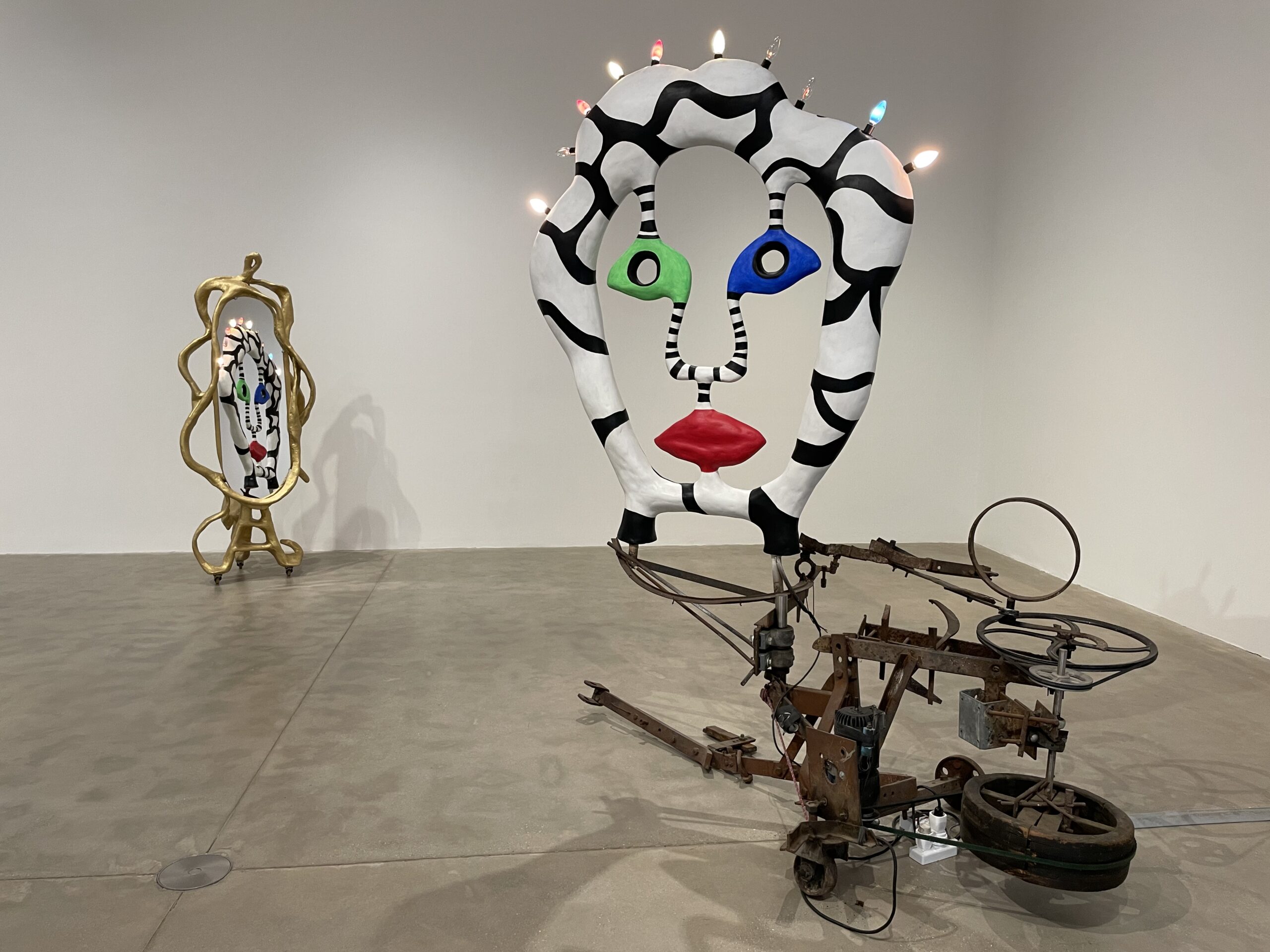Tuesday 29th July 2025
When I think of Niki de Saint Phalle, I imagine colourful caves, stalagmites rising from the earth adorned with gemstones, which, from the outside reveal themselves as figures set into the earth. She called them her ‘Nanas’, a french term meaning ‘chick’ or ‘dame’ generally used to describe a young saucy woman but reappropriated by de Saint Phalle to embody the “Every(wo)man” representing a powerful and joyful vision of femininity and motherhood.
Stepping into Hauser & Wirth, I expected to be struck by the immensity of de Saint Phalle’s achitectural sculpture however I encountered instead a precise meditation on collaboration, learning about how two artists, Niki de Saint Phalle and Jean Tinguely came together to live their lives through their work.
The exhibition presents a series of works made by both Tinguely and de Saint Phalle whose contradicting styles forge an unlikely poetry. The sculptures often seem to have been made instinctively as a conversation between the two artists who were responding to their present surroundings and materials. We learn ‘they would talk about something and then a few days later it was reality’ which speaks to the playful way the artists worked allowing them to create an empire of their own imaginations.
While the sculpture itself did not always spark my interest, I felt Jean Tinguely’s work in particular lacked subtlety in its use of found materials, it is the artists’ process of conceiving and realising new ideas that captured my imagination.
I often find that I’m great with coming up with ideas- ill-informed clouds of pretty words that circle my mind without action before drifting off. Jean Tinguely declared himself a poet, he believed that the ideas behind his work were more important that the outcome and that his machines were instruments for expressing his poetic ideas. I disagree. I find that the most exciting thing about Tinguely and de Saint Phalle’s work is not the idea nor the outcome but the process of turning one into the other.
This transformation from idea to outcome requires the drive and curiosity that we see in the way de Saint Phalle and Tinguely lived their lives. I don’t think the original idea matters too much in the end; they get lost, they change and turn into new things.
What I’ve learned most from this exhibition is that when you have an inkling of an idea, seize it, question it, try to understand it but most of all make it into something that exists and let everyone else decide because ‘ideas’ are meaningless otherwise.
- use of space
- mirrors
- fantasy
